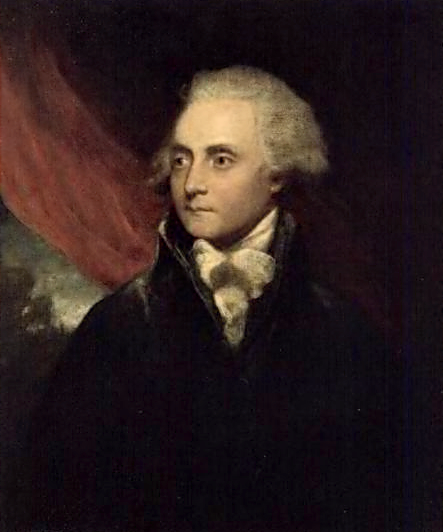This is the final, brief and incomplete summary of an editor whose works I am studying for the first chapter of my thesis. It’s taken me a long time to get here, Malone’s 1790 edition of The Plays and Poems of William Shakespeare, since setting out from a summary of Rowe‘s attitudes to actors I made back in Winter 2013. Of all the editions I’ve looked at, Malone’s was also the most challenging: it runs to 11 volumes, and incorporates a wealth of material: not just Malone’s comments and emendations but also those of many of his predecessors, several critical essays, and a great many reproductions of Malone’s sources. Having gone through it all, and produced what LibreOffice tells me is 13 632 words of notes, I can now write this post.
Perhaps the key word when talking about Malone’s approach is ‘historical’: unlike Pope or other early critics, his goal is to “restore” Shakespeare’s works to the condition they were in when they were first created. For this reason, Malone (with apologies) will keep Mercutio’s lines about a “Poperin pear”, the indecorous use of “grunt” in Hamlet, and more, for even if they are offensive to late eighteenth-century readers, they were not offensive to Shakespeare’s original audiences. Shakespeare was of a time, and editorial efforts to refine the playwright into something that suits the taste of another age are misguided, and should be replaced by a method which aims “to support and establish what the poet wrote, to illustrate the phraseology by comparing it with that of his contemporaries, and to explain the fugitive allusions to customs long since disused and forgotten”.
Of course, this is not so straightforward as Malone makes it sound. One peculiar result of insisting on Shakespeare’s historicity is that this edition also puts great weight on the way Shakespeare tends to make all periods resemble his own. Thus characters who could not know the Elizabethan terms for deer hunting use them in Henry IV part II, Coriolanus uses the technical language of Shakespeare’s stage, Caliban knows about the motley worn by fools, and so on. Malone’s observation of anachronisms (or, perhaps better named as ‘jacobo-elizabethanisms’) occurs throughout his notes, and runs counter to an argument made by people like Elizabeth Montague, who held that Shakespeare creates such convincing dramatic illusions as to carry us back to Rome or Henrician England. Instead, Malone is actually much closer to a criticism levelled by English critics at writers like Corneille and Racine, who were accused of Frenchifying everything they wrote about. What separates Malone, however, is that Shakespeare’s way of seeing his subjects through the language and traditions of his time is not a flaw, but rather something integral to his genius and so requiring explanation from the editor.

Malone’s efforts to historicise Shakespeare govern his edition’s attitude towards actors. In all the notes, only one actor from the eighteenth century is mentioned: Garrick, whose name appears at the end of Romeo and Juliet in a note pointing out that his adaptation of the work continues a tradition, begun by Otway, of rewriting the tomb scene so that the lovers have a final kiss. In the prefatory materials, Malone provides an ‘Historical Acount of the Stage’, which, as its name would indicate, devotes a great deal of space to the conditions of Shakespeare’s own theatres and acting troupes, finishing only with a brief section on the limited performance of Shakespeare in the period 1616-1741 (i.e. from Shakespeare’s death to Garrick’s first appearance on the stage). Even with such an emphasis on reconstructing the past, Malone does make some interesting points about Shakespeare and actors. He suggests, for example, that Shakespeare may have been a better actor than we give him credit for (although, of course, he was far superior as an author), and – in the odd note here and there – makes the case for Shakespeare’s experience as a man of the theatre influencing his language and choice of incidents. Similarly, his deeper understanding of the historical stage allows him to refute those criticisms levelled at actors since Pope. For instance, most textual corruption is, for Malone, the result of scribal error or restrictions opposed on the stage by the Master of Revels, rather than the corrupting influence of the actors.
Unfortunately, one other side effect of Malone’s clearer understanding of what the stage was like is that it closes down the amount of conjecture and reflection he makes with reference to performance. Whereas Theobald might try and imagine a performance in order to guess at Shakespeare’s decisions, Malone avoids all this. This is clearest when glossing the line “That from her working, all his visage wann’d”, used to describe one of the players in Hamlet. Here, Malone reprints the ideas of previous editors, who argue about whether an actor might be capable of changing his skin tone when in the grip of an emotional performance, but then dismisses this question as “unnecessary to inquire”, preferring to use internal textual evidence from Shakespeare’s oeuvre to prove that the playwright “thought he could”. The real concern, for Malone, is not whether Shakespeare was right about what happened on stage (and thus whether he should be corrected so as to be right about it), but rather if Shakespeare’s opinion can be construed from his other works, regardless of whether his observation fits what actually occurs in a performer.
It is because of examples like this that Malone is my last editor. His historical and historicising approach to Shakespeare’s text represents the end of the figure of the actor as a various and suggestive tool for thinking about Shakespeare, and instead makes performance, along with legal history, old slang, disused customs and more, just another aspect of those historical conditions so necessary to restoring Shakespeare back to his original condition.